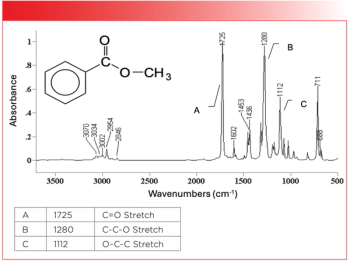
Ultrasensitive and Rapid Detection for Multiple Dopings in Saliva and Urine Using Surface-Enhanced Raman Spectroscopy
Researchers have developed an ultrasensitive and rapid detection method using surface-enhanced Raman spectroscopy (SERS) for multiple dopings in saliva and urine, offering potential advancements in doping control measures.
A team of researchers from China Jiliang University has developed a groundbreaking method for the ultrasensitive and rapid detection of multiple doping substances in saliva and urine. The study, published in the journal Spectroscopy Letters, introduces a combination of liquid phase extraction and surface-enhanced Raman spectroscopy (SERS) to address the challenges associated with traditional doping detection methods (1).
SERS is a powerful analytical technique that can be utilized to measure saliva. In SERS, the target analytes in saliva are adsorbed onto metallic nanostructures, such as silver or gold nanoparticles, which greatly enhance the Raman scattering signal. This enhancement allows for the ultrasensitive detection of various biomolecules and analytes present in saliva. By analyzing the unique Raman spectra obtained from the adsorbed molecules, SERS can provide valuable information about the chemical composition of saliva, including the presence of specific substances, such as drugs, metabolites, or disease markers. SERS is nondestructive by nature, and therefore, it is suitable for repeated measurements on small sample volumes, enabling rapid and accurate analysis of saliva for various applications, including biomedical diagnostics and forensic investigations.
Doping abuse remains a significant concern in competitive sports worldwide. Existing analysis techniques are often expensive, cumbersome, and require complex pretreatment procedures, leading to prolonged detection times. To tackle this issue, the research team sought to establish an on-site and quick detection approach.
In their study, the scientists successfully detected four common doping substances, namely clenbuterol, methadone, oxycodone, and chlordiazepoxide, in human saliva and urine using the proposed method. The ultrasensitive nature of the technique allowed for the detection of these substances at remarkably low concentrations. The limit of detection for clenbuterol, methadone, oxycodone, and chlordiazepoxide in saliva was found to be 25, 10, 50, and 25 ng/mL, respectively. In urine samples, the limits of detection were 25, 5, 50, and 25 ng/mL, respectively.
The novel approach combines liquid phase extraction, which efficiently isolates the target compounds, with SERS, a highly sensitive analytical technique. By leveraging the unique properties of SERS, the researchers achieved rapid and accurate detection of the four doping substances. Remarkably, the synchronized detection process enabled the identification of all four substances in as little as one minute, even at a concentration as low as 100 ng/mL in both saliva and urine.
The research findings highlight the tremendous potential of surface-enhanced Raman spectroscopy in on-site and rapid detection of multiple drugs. By providing a sensitive and efficient means of doping analysis, this method could significantly contribute to the enhancement of doping control measures in various competitive sports.
The study opens up new possibilities for combating doping in sports. With further advancements in detection techniques, the fight against doping continues to gain momentum, ensuring fair and clean competition for athletes worldwide.
Reference
(1) Feng, D.; Xu, S.-S.; Wen, B.-Y.; Kathiresan, M.; Zhang, Y.-J.; Wang, A.; Zhang, F.-L.; Jin, S.; Li, J.-F. Ultrasensitive and rapid detection for multiple dopings in saliva and urine using surface-enhanced Raman spectroscopy. Spectrosc. Lett. 2023, 56 (5), 249–262. DOI:
Newsletter
Get essential updates on the latest spectroscopy technologies, regulatory standards, and best practices—subscribe today to Spectroscopy.





